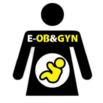What is abdominal muscle separation? Symptoms and Treatment

Abdominal muscle separation, also known as diastasis recti, is a condition where the rectus abdominis muscles, which run down the front of the abdomen, separate or move away from each other. This separation creates a gap in the midline of the abdomen. While it commonly occurs during pregnancy, it can also affect men and women who haven’t been pregnant.
Symptoms:
- Visible Bulge: A noticeable bulge or ridge along the midline of the abdomen, especially when the person engages their abdominal muscles.
- Back Pain: Diastasis recti can contribute to lower back pain as the weakened abdominal muscles may not provide adequate support to the spine.
- Posture Issues: Poor posture and difficulty maintaining an upright posture may be experienced due to weakened core muscles.
- Digestive Problems: Some individuals may report issues such as bloating or constipation due to reduced abdominal strength.
Treatment:
- Physical Therapy: A physical therapist can design specific exercises to help strengthen the abdominal muscles and encourage them to come back together.
- Corrective Exercises: Engaging in exercises that focus on the transverse abdominis, pelvic floor muscles, and overall core stability can be beneficial.
- Posture Correction: Learning and practicing proper body mechanics and posture can help in reducing the strain on the abdominal muscles.
- Bracing and Splinting: Some individuals may benefit from wearing abdominal braces or splints to provide support to the weakened muscles, especially during activities that may exacerbate the separation.
- Surgical Intervention: In severe cases where conservative measures are ineffective, surgical intervention may be considered to repair the separation.
It’s essential to consult with a healthcare professional, such as a physical therapist or a doctor, for an accurate diagnosis and to develop an appropriate treatment plan based on individual needs. Always consult with a healthcare provider before starting any exercise or treatment regimen, especially during pregnancy or postpartum, to ensure safety and effectiveness.


